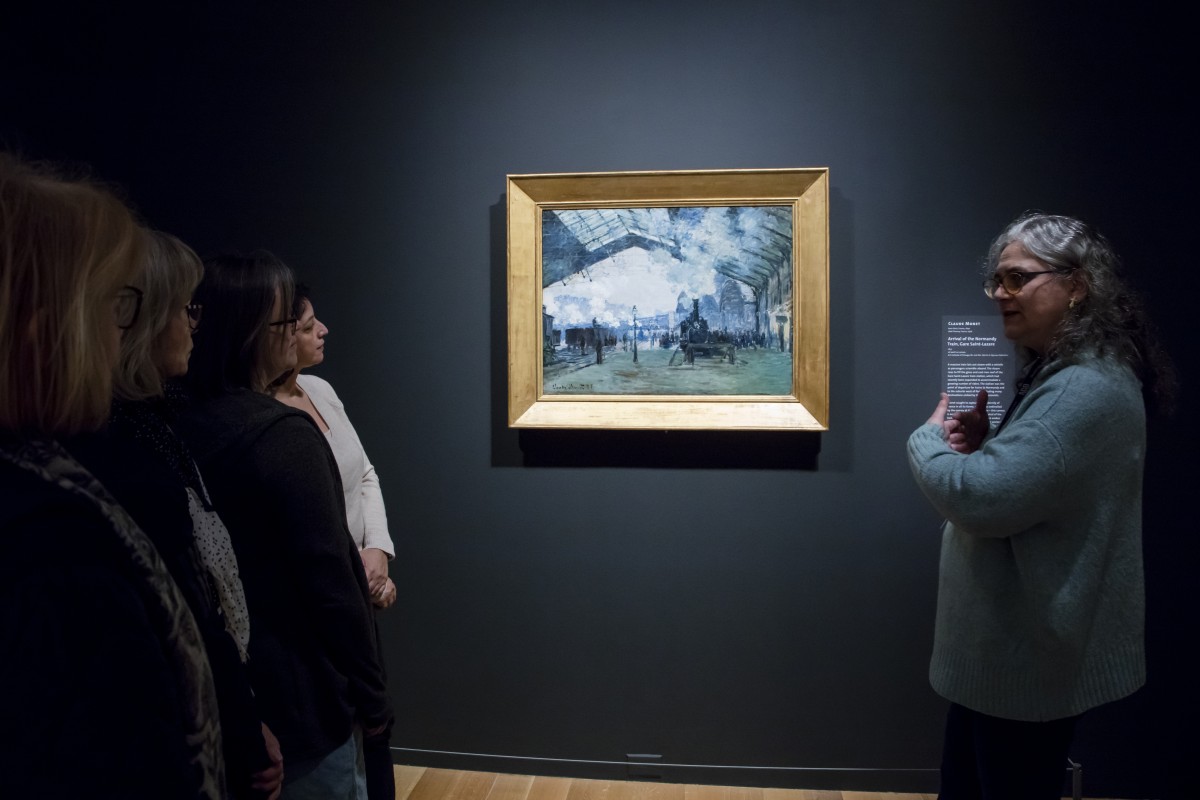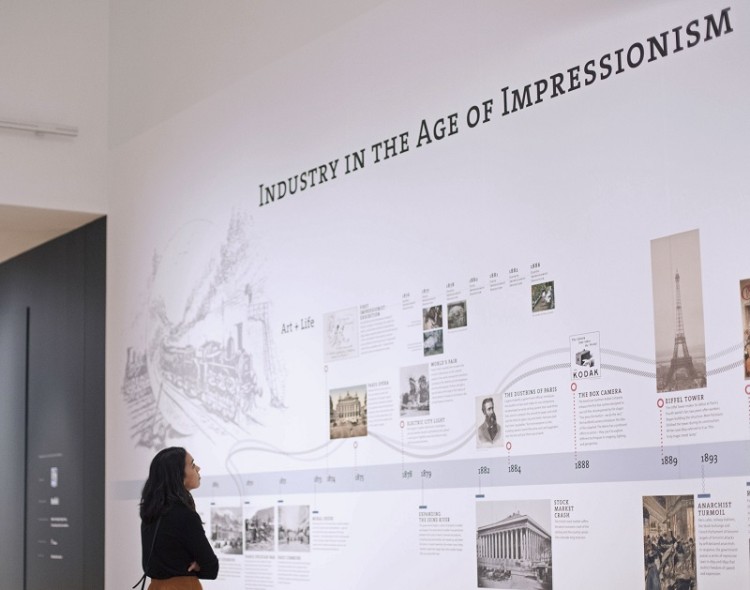Impressionism picks from those in the know
It’s National Volunteer Week! Find out what our volunteer Gallery Guides chose as their favourite works in Impressionism in the Age of Industry: Monet, Pissarro and more.

This National Volunteer Week (April 7–13), we’re celebrating our amazing and hardworking AGO volunteers who perform a wide variety of roles, including Gallery Guides. They lead visitors on various tours here, sharing their knowledge and passion for art with everyone who comes into the museum. You may have even met some of our Guides when visiting Impressionism in the Age of Industry: Monet, Pissarro and more. As we approach the final weeks of the exhibition, we asked some of them to share their insider information and stories behind their favourite works in the show.
Clarice Thornton (above): I love to look at and talk about Claude Monet’s Gare Saint-Lazare. It captures the spirit of the age, demonstrates the Impressionist style and is a truly stunning painting. Monet’s study of light led him to experiment with darker scenes, seen in the haze and smoke. And if you look closely the black train is actually a combination of dark colours. We’re drawn into the image but remain removed because all the people are farther off in the painting, all lining up to get on the train. It turns us into observers of this bustling scene in modern Paris: with trains, stations, crowds, urban architecture – giving us an impression of life as it would have felt in the late 1800s.
Aisling Joe: My favourite painting in the exhibition is James Tissot’s The Shop Girl. Tissot captures a transitional moment in history when women’s roles in the public sphere were expanding; even their clothing was on the cusp of great change. During this time, fashion shifted away from the ornate styles of the 19th century to the relatively simple clothing of the 20th. Each woman wears the fashionable bustle silhouette, but the simplicity and practicality of the central figure’s outfit makes her stand out as more modern. Not only is she earning her own money, but she’s also leading fashion toward a time when women’s increasing political freedoms are reflected in their clothing choices.

Niki Guner: I chose Maximilien Luce’s Factory in the Moonlight, partly because I had never heard of this work or the artist – the painting just stopped me in my tracks. Luce created beauty through light and composition, taking a very rough building and putting it within the romantic setting of moonlight. He elevates the ordinary into something extraordinary,
honouring the hard work that goes on in a factory. He doesn't idealize it, but he sees that beauty can be found everywhere.

You can see each of these paintings in Impressionism in the Age of Industry: Monet, Pissarro and more on view now until May 5. Make sure to stop by the Plan Your Visit kiosk and ask about the AGO’s daily tours and On-the-Dot Talks, included in General Admission.




